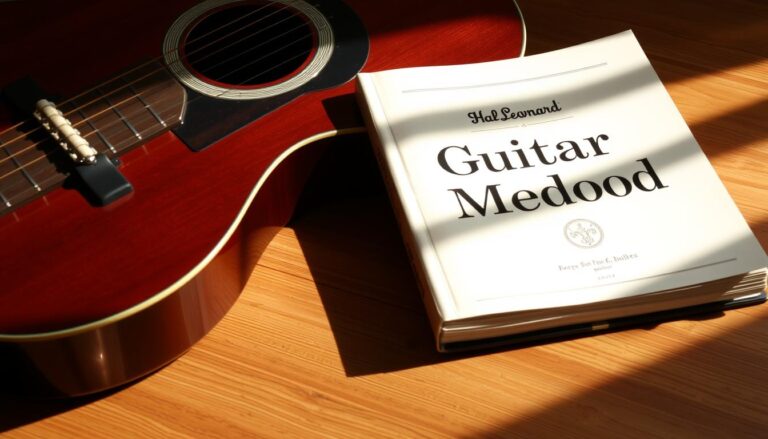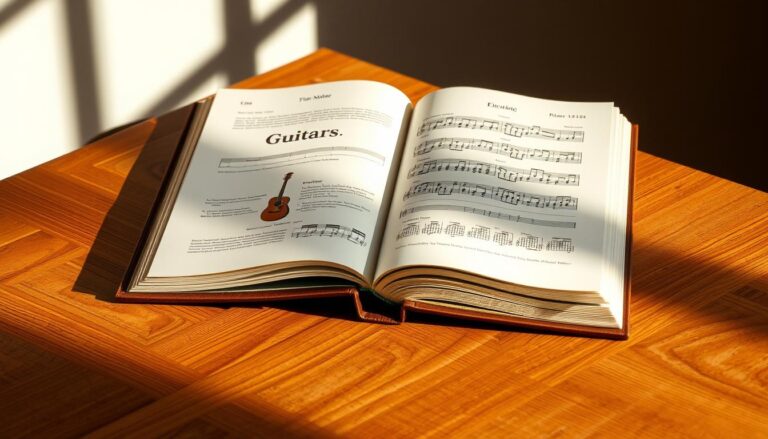Effective Songwriting Prompts for Improving Beginners
This field guide delivers concise, actionable frameworks that help beginners convert ideas into draft songs within a single day. It synthesizes three industry lists into a structured listicle designed to reduce decision paralysis and increase creative throughput.
The approach treats prompts as process catalysts, not formulas. Readers learn timed exercises, perspective shifts, hook-first and melody-first methods, constraint-driven drills, and two-chord templates that produce tangible song sections quickly. The guide emphasizes repeatable steps so people can select one prompt, set a timer, and finish a complete draft.
Outcomes focus on measurable skill growth. The frameworks support lyrical clarity, melodic capability, rhythmic feel, and harmonic familiarity. By tracking daily selections and outcomes, songwriters compound their capability over time and move beyond waiting for inspiration.
Key Takeaways
- Use time-boxed tasks to produce a full draft in one session.
- Apply category-driven prompts (hook, melody, groove, chords) to target specific skills.
- Remove common crutches to generate fresher lyrical phrasing.
- Log daily results to measure progress and refine prompt selection.
- Adapt prompt scope while keeping disciplined time windows for consistent practice.
How to Use This Listicle to Write a Song Today
A focused timer and a clear target reliably convert ideas into verse and chorus. The method prioritizes short, repeatable sessions that build habit and reduce hesitation.
Beat writer’s block with time-boxed prompts
Set one 10-minute block to write a verse and hook; follow with 5 minutes for a bridge or middle eight. A 5-minute stream-of-consciousness pass yields raw lines that can be mined immediately.
Switch perspective to unlock new lyric ideas
Assign the song a narrator: a novel character, a response to a known hit, or a missing-person report. Changing viewpoint bypasses personal blocks and produces concrete images for lyrics.
- Select one prompt and define the target: one verse + chorus; write without editing until the timer ends.
- Use a drum loop or two radios at once to force quick melodic choices and outline a melody in minutes.
- Log lines completed, hook strength, and clarity of perspective to track progress over time.
| Task | Duration | Outcome |
|---|---|---|
| Full draft | 10 minutes | Verse + chorus |
| Middle eight | 5 minutes | Bridge idea |
| Stream-of-consciousness | 5 minutes | Raw lyrical images |
| Listening inventory | 24 hours (no talking) | Concrete sensory lines |
“Short, timed sessions compound into reliable completion rates over weeks.”
Songwriting Prompts for Love, Breakups, and Relationships
Set an emotional thesis and a single scene to accelerate development of love and breakup songs. Define whether the track argues for relief, sorrow, or ambivalence before drafting lyrics.
Love without saying “love” or “you”
Constrain a draft to avoid the target word and direct address. Use sensory cues, daily actions, and setting details to imply feelings.
Example: describe a wet coat, a coffee stain, a streetlight at 2 a.m. — these concrete lines imply affection without naming it.
Happy vs. sad vs. conflicted breakups
Split breakup material into distinct sentiment tracks: optimistic relief, deep sorrow, and conflicted indecision.
- Assign one mood per draft to keep the story coherent.
- Choose tempo and a two- or three-chord loop to match the feeling (perky groove for relief, sparse loop for sorrow).
“Hello” and “Goodbye” relationship moments
Anchor the chorus with a specific moment: a first greeting, a final glance, a train platform at dusk. Pin time and object to increase memorability.
Flip a known hook by replacing a common word and then write lines that contradict the expected narrative. Draft one piece someone else could sing in character to surface relational dynamics.
| Task | Constraint | Harmonic option |
|---|---|---|
| Love implied | No “love”/”you”; sensory detail | Two-chord vamp |
| Happy breakup | Optimistic relief thesis | Three-chord loop, brisk tempo |
| Sad breakup | Sorrow thesis; sparse imagery | Two-chord slow vamp |
| Moment chorus | “Hello” or “Goodbye” anchor; specific object/time | Simple four-chord progression |
“Rate each draft on clarity of feelings, hook memorability, and cohesion between verses and chorus.”
Story-Driven Prompts and Writing from Another Perspective
Start with a single-sentence narrator statement that defines who speaks and what they want. This simple rule fixes pronouns, tone, and knowledge limits for the entire piece.
Choose someone else central to the story—an overlooked witness, a disliked public figure, or a fictional character from a book. Extract one trait, one desire, and one stake to shape verse scenes.
Write a song from someone else’s point of view
Draft as if the narrator knows only what they would plausibly know. Use concrete, report-style lines to build credibility.
Character songs from a favorite book or news story
- Map setup, inciting event, escalation, pivot, resolution; align each section to a map stage.
- For a response piece, adopt the secondary voice and reframe the original story with unique diction.
Parent to child, two friends, or two enemies
Try two-voice formats with alternating sections. Give each voice a clear goal and conflict so tension drives the chorus.
“Calibrate the melody contour to the narrator’s arc: let the pre-chorus rise and the chorus deliver the narrator’s claim.”
Personal Prompts: Life, Identity, and “I Am” Songs
Frame a personal track by stating one clear identity claim and then prove it with lived detail. Begin with an I am line that defines artistic intent, then use verses to provide concrete evidence: habits, places, achievements.
Draft two short pieces: one that centers on a biggest hope and one on a biggest disappointment. Convert both into a composite that contrasts feelings and points to a new chapter.
Build an artist introduction track listing genre influences, recurring themes, and core values. Include one stanza about something you’ve never shared, using imagery rather than raw confession to preserve dignity.
Practical checklist
- Start with an I am statement, then write verses with verifiable details (dates, locations).
- Use a concise pre-chorus to pivot from past evidence to present intent.
- Keep the chorus as a thesis sentence that a person could sing and recognize as your signature.
- End by embedding a practical next step in the lyric (call, move, apology, application).
“Evaluate each line: does it advance identity, clarify feelings, or mark a decision for a new chapter?”
Start with a Lyrical Hook: Titles, Questions, and Invented Words
Begin a draft by forging a single, memorable hook that the rest of the track proves. Choosing a precise hook speeds decision-making and makes the chorus function as the song’s product headline.
One-word, two-word, and full-sentence hooks
Generate options in three tiers: one-word (e.g., “Glow”), two-word (“Last Letter”), and full-sentence (“Did you keep that old letter?”). Select the most vivid option and write the chorus first to test cohesion.
Flip an existing hook with a new story
Change one word of a familiar title to avoid echoes of a song favorite and then create a distinct narrative. Map a simple chord progression and cadence before drafting verses so the hook’s stress pattern aligns with melody.
| Hook Type | Example | Initial Harmonic Plan |
|---|---|---|
| One-word | Glow | Two-chord vamp (Am–F) |
| Two-word | Last Letter | Three-chord loop (C–G–Am) |
| Question | Did you stay? | Minor cadence, suspended pre-chorus |
| Coined term | Skylist | Bright four-chord progression |
“Draft the chorus as a claim, then let each verse deliver evidence that makes the hook feel inevitable.”
Melody-First and Groove-First Prompts to Shape Your Track
Start by isolating one melodic cell and build every section around that repeating idea. This method keeps the melody clear and gives the track a single identity to test against different grooves.
Perky, expressive, or melancholy melodic archetypes
Choose a melody type and commit to one rhythmic motif. Repeat that motif across verse and chorus to maintain cohesion.
- Perky: short notes, bright register, syncopated motif.
- Expressive: wider leaps, rubato touches, breathing space.
- Melancholy: narrow range, minor steps, motif repetition.
Funky, chilled, or intentionally “weird” grooves
Pick a beat that forces phrasing choices before writing words. Use a two-chord vamp or a simple three- or four-chord loop to limit harmonic options and speed decisions.
- Funky grooves push shorter lyric phrases.
- Chilled grooves allow longer held notes and space.
- Weird grooves change stress patterns and inspire novel lines.
Drum-loop freestyles to spark lyrics
Record a 3–5 minutes drum loop freestyle, capture syllables, then extract the clearest seed for the chorus.
| Stage | Duration (minutes) | Goal |
|---|---|---|
| Melody sketch | 10 | Define motif and register |
| Groove selection | 5 | Set phrasing and cadence |
| Drum freestyle | 3–5 | Harvest lyric seeds |
“Map register across sections: low verse, lifted pre-chorus, peak chorus.”
Note: If a draft references a song favorite, replace its harmony and melodic shapes with original contours to keep the results distinct. After melody confirmation, place lyrics so stresses align with strong beats for maximum clarity.
Chord Progression Ideas: Reverse, Borrow, and Simplify
A minimal chord bed accelerates drafting and highlights melodic choices immediately.
Two-chord frameworks speed the process. Begin with a two-chord groove and write song sections over it. This reduces decision load and produces a usable verse and chorus quickly.
Simple three- and four-chord patterns
Use a stable three- or four-chord progression to anchor structure. Keep harmonic rhythm consistent so the vocalist has predictable support for lyric delivery and melody.
Reverse and borrow techniques
Play a known progression in reverse order to reveal new tension and release. Or try write a borrowed progression from a different genre, but keep the melody and lyric content original to avoid mimicry.
- Draft melody against sustained chords first.
- Reserve modal interchange and secondary functions for later edits.
- Record a loop and write song lines in timed sprints; alternate vowel-focused melody work with consonant-driven lyric drafts.
- Document progression, key, tempo, and the hook to streamline future arrangement.
“Simplify early; complicate later.”
Environment, News, and Object Writing for Real-World Inspiration
Treat public life as raw material: collect sounds, objects, and micro-events to build a draft.
Neighborhood soundscapes and the five senses. Conduct a five-senses sweep: list three concrete things heard, seen, smelled, touched, and tasted. Embed at least three sensory images per verse so each stanza advances setting and mood.
Write a song about a current news story
Select one news event and focus on human impact and decision points. Avoid headline language; instead, record one day’s micro-events and a brief portrait of affected people with a precise detail (job, habit, or artifact).
Example: a baker’s broken timer, a commuter’s worn badge, a teacher’s single stained notebook—use these to shape verses that lead to a broader chorus claim.
Pick an inanimate object and tell its story
Choose an object and limit perspective to what it plausibly perceives. Reverse-copy one paragraph from a book to disrupt word order, then mine a resulting line as a pre-chorus or hook.
- Keep the chorus broader than verse specifics; synthesize observed evidence into a universal claim.
- For arrangement, underlay field recordings subtly under the intro to establish place without masking the topline.
- Validate the draft by confirming each verse supplies new evidence and the perspective stays consistent.
“Concrete detail converts observation into narrative leverage.”
Time, Constraints, and Wordplay Prompts to Boost Creativity
Timed limitations convert vague intentions into measurable lyrical output. The section prescribes compact drills that emphasize momentum and measurable outcomes.
Write in ten minutes; add a middle eight in five
Set a timer to write song verse and chorus in 10 minutes. Prioritize momentum over line-by-line perfection.
After the initial block, allocate 5 minutes to add a middle eight. This preserves creative energy while filling structure quickly.
Alphabet acrostics and limited word lyrics
Use an A–Z acrostic so each line starts with the next letter. The constraint forces new entry points and reduces decision fatigue.
Try a limited vocabulary draft—12 words maximum—or a single-syllable-only lyric to tighten rhythm. Pair that with a major/minor inversion exercise: write the same text, then render it in a major key and again in a minor key to study how harmony shifts tone.
- Post-timer review: mark only structural fixes; preserve original intent.
- Measure productivity by counting lines and hook candidates; archive results for future calibration.
| Exercise | Duration | Outcome |
|---|---|---|
| Full draft | 10 minutes | Verse + chorus |
| Middle eight | 5 minutes | Bridge idea |
| Alphabet acrostic | 15 minutes | Novel entry points |
| Limited words | 10 minutes | Sharper hook |
Unexpected and Whimsical Prompts to Stretch Your Imagination
Choose one speculative premise and bind it to a single, concrete problem. That constraint turns high concept into a workable story engine. Define the era marker, one artifact, and the cultural friction that forces action.
Last human, time-traveler, or AI society
Pick a protagonist: the last human, a time-traveler, or a single human inside an AI-dominant city. Anchor the lyric with one survival or cultural problem—water scarcity, banned books, or obsolete slang.
Holidays, public service anthems, and quirky ideas
Frame a holiday around a specific ritual or conflict. Or craft a public service anthem that embeds a clear imperative in the hook so it makes people dance, call, or donate.
- Write a character-driven lyric with precise era markers.
- Switch to a non-human perspective to reveal institutional irony.
- Include a current news detail as backdrop to raise stakes.
“High-contrast premises reveal universal life insight when the chorus states a simple, repeatable claim.”
| Premise | Anchoring Problem | Hook Goal |
|---|---|---|
| Last human alive | Lost archive access | Chorus repeats a preservation imperative |
| AI society with one human | Cultural invisibility | Hook commands a small, human ritual |
| Holiday reframe | Ritual conflict | Hook makes people laugh and remember |
| Time-traveler | Temporal guilt | Chorus links past choice to present life |
Songwriting Prompts
Group concept routes into discrete categories to remove decision friction and speed output. The index below helps a writer select one clear action and complete a draft in a single sitting.
Category index: topic-driven, perspective-driven, hook-first, melody/groove-first, harmony-first, environment/news, and constraints/wordplay. Each category includes one minimal starter so a songwriter can write song output predictably.
- Topic-driven: relationship set — 10-minute verse + chorus on a single scene.
- Perspective-driven: alternate narrator — adopt one character and limit knowledge.
- Hook-first: title → chorus → evidence; pick one vivid phrase and prove it.
- Melody/groove-first: sketch a motif, loop 5 minutes, harvest lyric seeds.
- Harmony-first: two-chord vamp, write over sustained chords.
- Environment/news: five-senses sweep for concrete lines.
- Constraints/wordplay: 10-minute limited-vocab draft or A–Z acrostic.
High-yield techniques to accelerate discovery: reverse-paragraph reframe (generate unexpected hooks), dual-radio soundbed to force melodic choices, and a quick MIDI-picture sketch to map contour before lyrics.
Combine one melody or groove method with one constraint to boost novelty while preserving speed. Rotate focus weekly to build melody, lyric, harmony, and arrangement capability.
“Select one category, set a timer, and log results to identify which inputs reliably produce strong song ideas.”
| Category | Starter Pack | Best for |
|---|---|---|
| Topic-driven | 10-min scene + chorus | Verse-first |
| Hook-first | Title → chorus → 10-min proof | Chorus-first |
| Melody/groove-first | Motif sketch + 5-min loop | Chorus or riff-driven |
| Constraints/wordplay | Limited words or A–Z | Lyric novelty |
Include occasional use of a write song favorite or favorite book as a scaffold for flips, but preserve originality. Use brief paragraph reframes when ideation stalls to surface new hooks. Verify prosody by sight-singing or speaking the hook before arrangement and record outcomes by category for ongoing calibration.
Conclusion
Conclusion: Pick one starter now, set a timer, and finish a draft today. Choose either a melody-first or hook-first pathway, then run a 10-minute block for verse and chorus and a 5-minute block for a middle eight.
Document outcomes immediately: note time, difficulty, and one clear takeaway. Use a five-minute review to fix meter or rhyme without reopening structure.
Rotate focus weekly across lyrics, melody, harmony, and arrangement. Save every draft—minor captures often yield strong hooks or bridges later.
For validation, ask two people to state the song’s thesis in one sentence. Maintain a simple log to identify the way that produces the most repeatable results.
Directive: choose one prompt, start the timer, and complete a draft today to convert planning into tangible songs.
FAQ
What is the purpose of these songwriting prompts?
The prompts provide structured idea starters and constraints that accelerate creative output, reduce writer’s block, and help beginners develop melody, lyric, and arrangement skills through practice sessions and targeted exercises.
How should a beginner use this list to write a complete song in one session?
Time-box the process: spend 10–20 minutes on a hook or chord progression, 15–30 minutes drafting verses, and 10 minutes refining a chorus. Use a single constraint—perspective change, limited words, or a melody-first approach—to maintain focus and finish a draft within a few hours.
Which prompts work best for writing relationship songs without clichés?
Use object-based or moment-driven prompts: describe a mundane object or a single interaction (“hello” or “goodbye”) without naming the relationship. That encourages specificity and avoids common tropes while conveying emotional truth.
How can one write convincingly from another person’s point of view?
Research the character briefly, list three defining traits or a pivotal memory, then write a first-person verse constrained by those facts. Stay consistent with vocabulary and sensory detail to maintain credibility across the song.
What practical exercises develop melody and groove quickly?
Start with short melodic motifs (4–8 bars) and record a loop. Improvise vocal lines over three different grooves—perky, chilled, and odd-meter—to discover effective melodic contours. Convert compelling motifs into a chorus hook or riff.
How do chord-progression techniques like reversal or borrowing improve songwriting?
Reversing a known progression or borrowing from a different genre introduces unexpected harmonic movement and fresh emotional color. Simplifying to two or three chords can clarify melodic focus and strengthen hook development.
Can current events or the environment be used ethically as song material?
Yes. Base songs on verifiable facts, avoid exploiting trauma, and focus on human-scale narratives or sensory detail. Attribution and careful framing maintain credibility when engaging with news or public stories.
What time or word-count constraints are most effective for rapid idea generation?
Ten-minute drafting rounds for a verse or chorus and five-minute exercises for a bridge or middle eight are effective. Alphabet acrostics or 50-word lyric limits force concision and often yield surprising lines.
How should a writer adapt whimsical or speculative prompts for a commercial audience?
Anchor the strange concept in relatable emotion or a clear character arc. Use accessible language, a memorable hook, and standard song forms (verse–chorus–bridge) to increase commercial viability while preserving originality.
Are there recommended tools or workflows to track ideas and progress?
Maintain a categorized idea log—hooks, chord progressions, character sketches—using note apps or a cloud document. Record rough demos on a smartphone, timestamp sessions, and review weekly to prioritize and iterate on promising material.






